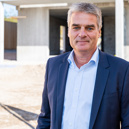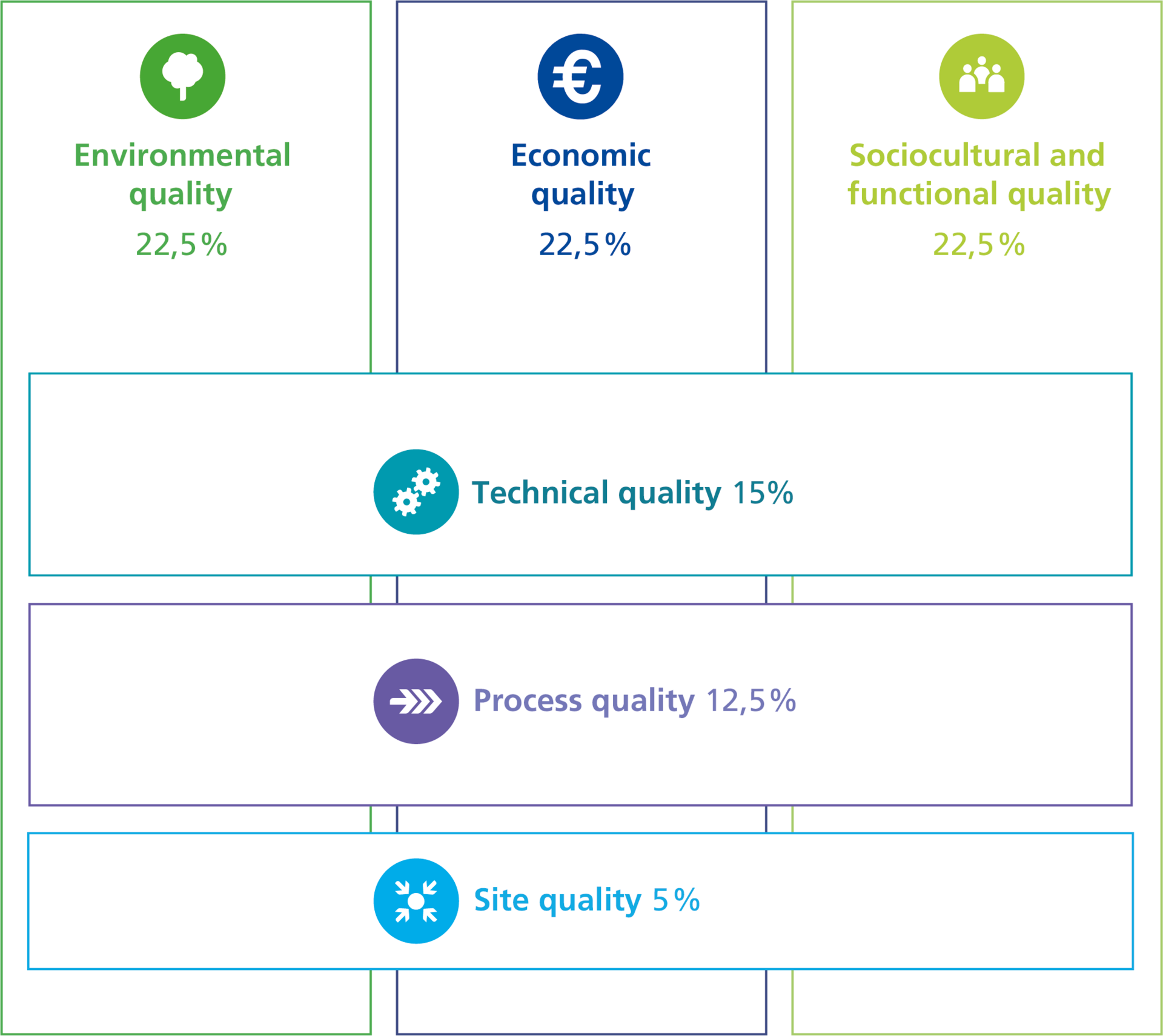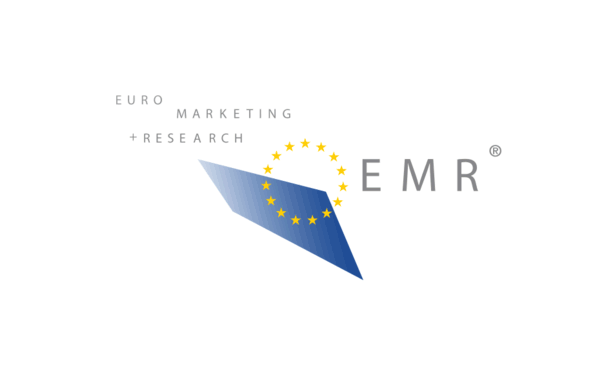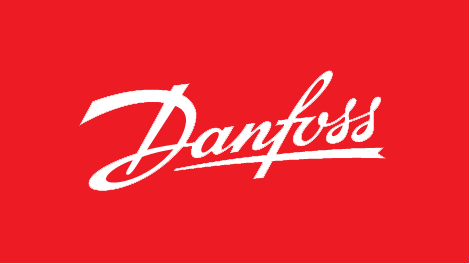Danfoss – Danfoss builds the world’s most livable lab
The new Danfoss House is the world’s only multi-residential building of bricks and concrete to achieve the highest certification under the globally recognized DGNB-standard.
Danfoss House is built on a burning platform. As buildings account for more than a third of the world’s energy consumption and 40% of all CO2 emissions.
Danfoss has solutions that can change this. The new Danfoss House will be used for continuously developing and testing innovative technologies for better comfort and lower consumption.
“We use it to demonstrate our products in use and tell the story about how we can decarbonize multifamily houses and housing in general in the world. So, it would make a big impact if we could demonstrate that way to net zero,” says Torben Christensen, Chief Sustainability Officer, Danfoss.
The Danfoss House is also what a dozen of the company’s expat employees can call home. You can almost call it the world’s most livable lab.
“It’s actually pretty cool as an employee to see the Danfoss solutions in action. And it provides a lot of peace of mind for me and my family having this place to stay in in the future,” Elodie Segaud, Director, Brand & design, Danfoss, explains.
Danfoss House has both centralized and decentralized heating systems installed – to test the systems against each other. The house is surrounded by ten 100-meter-deep geothermal boreholes for groundwater cooling and heating during winter. It has floor cooling and features diffuse ventilation with cooling. Danfoss House is upgradable due to its large technical shafts, and a completely smart home, simulated, monitored and planned so it never gets too hot or cold.
The combined home to employees and testing and development center for Danfoss’ solutions for residential buildings has been built by Danfoss’ owner foundation, the Bitten & Mads Clausen Foundation.

It’s seeing is believing. It is really making the difference if you’re able to show a real case as Danfoss House. You can touch it, you can look at it, you can go into it and you can see it’s possible to build a super energy efficient house as we have here. So, in other words, solutions are here, components are here, and that is exactly what we are showing with the Danfoss House.
Lars Tveen, CEO, Bitten and Mads Clausen Foundation
Behind the building is the construction company Daugaard Pedersen.
CEO Jan Riis Nielsen says:
“Danfoss House is a unique project that differs from traditional residential buildings through its combination of sustainability, architecture and technical innovation. It has been a challenging but rewarding journey with many important choices along the way. At Daugaard Pedersen, we believe that Danfoss House now stands as an icon for modern housing construction, which in an exemplary way unites energy-efficient technologies, sustainable principles and a strong architectural identity.”
Background
There are only around 20 DGNB platinum certified residential buildings in the world, and Danfoss House is the only multi-residential building made of bricks and concrete amongst them.
DGNB (German Sustainable Building Council) is one of the four leading international sustainability standards (BREEAM, LEED, HQE, DGNB) but differentiates with its 360° view – which includes environmental, economic, social-cultural and functional, technical, and process quality.
Awards
- Awarded DGNB Heart for focusing on well-being and indoor climate
- Awarded DGNB Diamond for outstanding design and architectural quality
- Named the most successful and beautiful new building in Sønderborg Municipality by City and Environmen
SourceDanfoss
EMR Analysis
More information on Danfoss: See the full profile on EMR Executive Services
More information on Kim Fausing (President and Chief Executive Officer, Danfoss): See the full profile on EMR Executive Services
More information on the Sustainable Goals and ESG Reporting 2024 by Danfoss: See the full profile on EMR Executive Services
More information on Torben Christensen (Chief Sustainability Officer & Head of Global Services, Danfoss): See the full profile on EMR Executive Services
More information on Elodie Segaud (Director, Brand & Design, Danfoss): See the full profile on EMR Executive Services
More information on the Bitten & Mads Clausen Foundation: https://www.bmcfond.com +
The Creation of the Foundation
Bitten & Mads Clausen’s Foundation was founded in 1971 by Bitten Clausen, Mads Clausen’s widow. She did so as part of a generational change at Danfoss, with the intention of strengthening Danfoss for the future. The creation of the Foundation entailed Bitten Clausen transferring 50% of the share capital of Danfoss A/S to the Foundation and drawing up a trust deed for its activities.
Primary Aim of the Foundation
The Foundation’s primary aim is to strengthen Danfoss so that the company is guaranteed financial security and competitive development. This is managed via the Foundation’s holding of shares in Danfoss A/S. The Foundation also uses its influence as a shareholder at the appointment of members to the Danfoss board. Finally, the Foundation will work towards maintaining and increasing the number of people in work in Southern Jutland.
Who Benefits from the Foundation?
In order to achieve its primary aim, the Foundation may choose to support Danfoss A/S indirectly through initiatives within three award areas: Research and Education, Local Neighbourhoods and Communities, and Sustainability. Since requests for funds cannot be made to the Foundation, it is the Foundation’s Board of Directors that select the initiatives it wishes to support.
More information on Lars Tveen (Chief Executive Officer, the Bitten & Mads Clausen Foundation): See the full profile on EMR Executive Services
More information on the German Sustainable Building Council (DGNB): https://www.dgnb.de/en + DGNB stands for German Sustainable Building Council. The DGNB is an independent non-profit association that was founded in 2007 and has developed into Europe’s largest network for sustainable building.
But DGNB is more than just four letters. It is the promise to change the status quo in the construction and real estate industry – and to do so in many ways. We take responsibility and make our contribution to making sustainability and climate action the new normal. As a content-driven solution provider, we show paths to all those who are willing to move with us in this direction. We support all those who have understood that “business as usual” has no future. For them, we create platforms for exchange, for seeking and finding like-minded people, for achieving more together.
More than 2,500 member organisations from all areas of the construction and real estate sector have expressed their trust in us. Architectural firms, planners and consultants meet builders, project developers, companies in the construction industry and product manufacturers at the DGNB. The financial sector, municipalities, associations and universities are also involved in the participatory association.
More information on Dr. Christine Lemaitre (Chief Executive Officer, DGNB e.V.): https://www.dgnb.de/en/dgnb/team-of-the-dgnb-office + https://www.linkedin.com/in/dr-christine-lemaitre-b83bb184/
More information on Johannes Kreißig (Chief Executive Officer, DGNB e.V. and DGNB GmbH): https://www.dgnb.de/en/dgnb/team-of-the-dgnb-office + https://www.linkedin.com/in/johannes-kreissig-19161162/
More information on Markus Kelzenberg (Chief Executive Officer, DGNB GmbH / Certification Body): https://www.dgnb.de/en/dgnb/team-of-the-dgnb-office
More information on DGNB Certification: https://www.dgnb.de/en/certification/important-facts-about-dgnb-certification/about-the-dgnb-system + In order to make sustainable building practically applicable, measurable and thus comparable, the DGNB has developed its own certification system. This was first used on the market in 2009. Since then, the DGNB System has been continuously developed and is today not only considered the most advanced worldwide, but is also internationally recognised as the Global Benchmark for Sustainability. The DGNB Certification System is available in different variants for buildings, districts and interiors. As a planning and optimisation tool, it helps all those involved in construction to implement holistic sustainability quality.

More information on Daugaard Pedersen: https://daugaardp.dk/ + Most construction projects are the start of a journey. A journey where the client must be challenged, guided, helped and inspired… to the many decisions that must be made to achieve the optimal end result.
For over 40 years, Daugaard Pedersen A/S has been a “tour guide” for a wide range of Danish and foreign companies that have needed new frameworks.
The starting point for almost all new commercial construction is the flow and activities that must be in the building. In administrative buildings, it must be analyzed how a new layout best meets and creates the most efficient and best experience for an employee and visitors to the building, from the time they arrive until they leave. The same applies to a production and logistics property, where it is the flow of goods that must be analyzed and the workflows that are underway, so that the layout ensures higher efficiency of goods flow and utilization of floor meters and cubic meters.
A construction project must be analyzed and assessed many times to ensure that you reach the “desired destination”. Daugaard Pedersen A/S has the word of many customers that with the strongest setup from the first line to the finished project, you will go much further than you had expected in advance. Be it within construction, but also within production flow, financing, land purchase, business case optimization and pricing of the construction.
Daugaard Pedersen A/S is located in Kolding. The company is owned by 8 employees who have their hands on the stove every day. Daugaard Pedersen A/S employs approximately 40 employees and 200-300 people through subcontractors.
More information on Jan Riis Nielsen (Chief Executive Officer, Daugaard Pedersen): https://daugaardp.dk/p/kontakt + https://www.linkedin.com/in/jan-riis-9498b92/
More information on BREAAM Sustainability Standards and Certification: https://www.breeam.com + Driven by data. Backed by science. For a greener tomorrow.
Since 1990, BREEAM’s third-party certified standards have helped improve asset performance at every stage, from design through construction, through use and refurbishment.
Millions of buildings around the world are registered to BREEAM’s holistic approach to achieve environmental and social governance (ESG), health, and net zero goals.
BREEAM is the world-leading sustainability assessment method for the built environment and infrastructure. Project owners around the world rely on BREEAM to achieve their sustainability goals and improve the performance of their assets. The BREEAM framework is used to assess whole life performance, from new build projects to refurbishment and fit-out.
BREEAM supports ESG solutions in:
- Net zero carbon
- Whole life performance
- Health and social impact
- Circularity and resilience
- Biodiversity
- Disclosures and reporting
More information on LEED Certification: https://www.usgbc.org/leed + LEED (Leadership in Energy and Environmental Design) is the world’s most widely used green building rating system. LEED certification provides a framework for healthy, highly efficient, and cost-saving green buildings, which offer environmental, social and governance benefits. LEED certification is a globally recognized symbol of sustainability achievement, and it is backed by an entire industry of committed organizations and individuals paving the way for market transformation.
- 197,000 LEED projects worldwide
- 186 countries and territories
- >29 billion+ SF
LEED v5 is the newest version of LEED. It marks a transformative milestone in the built environment’s alignment with a low-carbon future and addresses critical imperatives such as equity, health, ecosystems and resilience.
To achieve LEED certification, a project earns points by adhering to prerequisites and credits that address carbon, energy, water, waste, transportation, materials, health and indoor environmental quality. Projects go through a verification and review process by GBCI and are awarded points that correspond to a level of LEED certification: Certified (40-49 points), Silver (50-59 points), Gold (60-79 points) and Platinum (80+ points).
LEED is a holistic system that doesn’t simply focus on one element of a building such as energy, water or health, rather it looks at the big picture factoring in all of the critical elements that work together to create the best building possible. In fact, 35% of the credits in LEED are related to climate change, 20% of the credits directly impact human health, 15% of the credits impact water resources, 10% of the credits affect biodiversity, 10% of the credits relate to the green economy, 5% of the credits impact community and 5% of the credits impact natural resources.
More information on HQE Certification (Haute Qualité Environnementale / High environmental): https://www.hqegbc.org/en/qui-sommes-nous-alliance-hqe-gbc/la-certification-hqe/ +To certify that a building (residential or tertiary), a district or an infrastructure takes into account the requirements and expectations related to the challenges of the sustainable city, the HQE certification constitutes an indisputable sign of quality.
HQE certification reflects a balance between respect for the environment (energy, carbon, water, waste, biodiversity, etc.), quality of life and economic performance through a global and multi-theme/multi-criteria approach. Whatever the territory, HQE is also a strategic roadmap, guaranteeing control of costs and deadlines during construction, control of costs and risks during operation and differentiation during rental or sale.
The various HQE certifications, which can be associated with the NF mark, have been built on the basis of the reference frameworks made available by the HQE-GBC Alliance and are regularly enriched with feedback. HQE certification is based on verification by independent auditors, via “third party” audits, which ensure the transparency and credibility of the performance evaluation process. Significant commitment to the approach built by the HQE-GBC Alliance, the management system is at the heart of HQE certification.
EMR Additional Notes:
- Carbon Dioxide (CO2):
- Primary greenhouse gas emitted through human activities. Carbon dioxide enters the atmosphere through burning fossil fuels (coal, natural gas, and oil), solid waste, trees and other biological materials, and also as a result of certain chemical reactions (e.g., manufacture of cement). Carbon dioxide is removed from the atmosphere (or “sequestered”) when it is absorbed by plants as part of the biological carbon cycle.
- Biogenic Carbon Dioxide (CO2):
- Biogenic Carbon Dioxide (CO2) and Carbon Dioxide (CO2) are the same. Scientists differentiate between biogenic carbon (that which is absorbed, stored and emitted by organic matter like soil, trees, plants and grasses) and non-biogenic carbon (that found in all other sources, most notably in fossil fuels like oil, coal and gas).
- Decarbonization:
- Reduction of carbon dioxide emissions through the use of low carbon power sources, achieving a lower output of greenhouse gasses into the atmosphere.
- Carbon Footprint:
- There is no universally agreed definition of what a carbon footprint is.
- A carbon footprint is generally understood to be the total amount of greenhouse gas (GHG) emissions that are directly or indirectly caused by an individual, organization, product, or service. These emissions are typically measured in tonnes of carbon dioxide equivalent (CO2e).
- In 2009, the Greenhouse Gas Protocol (GHG Protocol) published a standard for calculating and reporting corporate carbon footprints. This standard is widely accepted by businesses and other organizations around the world. The GHG Protocol defines a carbon footprint as “the total set of greenhouse gas emissions caused by an organization, directly and indirectly, through its own operations and the value chain.”
- CO2e (Carbon Dioxide Equivalent):
- CO2e means “carbon dioxide equivalent”. In layman’s terms, CO2e is a measurement of the total greenhouse gases emitted, expressed in terms of the equivalent measurement of carbon dioxide. On the other hand, CO2 only measures carbon emissions and does not account for any other greenhouse gases.
- A carbon dioxide equivalent or CO2 equivalent, abbreviated as CO2-eq is a metric measure used to compare the emissions from various greenhouse gases on the basis of their global-warming potential (GWP), by converting amounts of other gases to the equivalent amount of carbon dioxide with the same global warming potential.
- Carbon dioxide equivalents are commonly expressed as million metric tonnes of carbon dioxide equivalents, abbreviated as MMTCDE.
- The carbon dioxide equivalent for a gas is derived by multiplying the tonnes of the gas by the associated GWP: MMTCDE = (million metric tonnes of a gas) * (GWP of the gas).
- For example, the GWP for methane is 25 and for nitrous oxide 298. This means that emissions of 1 million metric tonnes of methane and nitrous oxide respectively is equivalent to emissions of 25 and 298 million metric tonnes of carbon dioxide.
- Carbon Capture and Storage (CCS) – Carbon Capture, Utilisation and Storage (CCUS):
- CCS involves the capture of carbon dioxide (CO2) emissions from industrial processes. This carbon is then transported from where it was produced, via ship or in a pipeline, and stored deep underground in geological formations.
- CCS projects typically target 90 percent efficiency, meaning that 90 percent of the carbon dioxide from the power plant will be captured and stored.
- Carbon Dioxide Removal (CDR):
- Carbon Dioxide Removal encompasses approaches and methods for removing CO2 from the atmosphere and then storing it permanently in underground geological formations, in biomass, oceanic reservoirs or long-lived products in order to achieve negative emissions.
- Direct Air Capture (DAC):
- Technologies extracting CO2 directly from the atmosphere at any location, unlike carbon capture which is generally carried out at the point of emissions, such as a steel plant.
- Constraints like costs and energy requirements as well as the potential for pollution make DAC a less desirable option for CO2 reduction. Its larger land footprint when compared to other mitigation strategies like carbon capture and storage systems (CCS) also put it at a disadvantage.
- Carbon Credits or Carbon Offsets:
- Permits that allow the owner to emit a certain amount of carbon dioxide or other greenhouse gases. One credit permits the emission of one ton of carbon dioxide or the equivalent in other greenhouse gases.
- The carbon credit is half of a so-called cap-and-trade program. Companies that pollute are awarded credits that allow them to continue to pollute up to a certain limit, which is reduced periodically. Meanwhile, the company may sell any unneeded credits to another company that needs them. Private companies are thus doubly incentivized to reduce greenhouse emissions. First, they must spend money on extra credits if their emissions exceed the cap. Second, they can make money by reducing their emissions and selling their excess allowances.
- Geothermal Heating, Heat Pumps, Chillers, Hydronics & Heat Exchangers:
- Geothermal heating and cooling systems take advantage of the stable temperature underground using a piping system, commonly referred to as a “loop.” Water circulates in the loop to exchange heat between your home, the ground source heat pump, and the earth, providing geothermal heating, cooling, and hot water at remarkably high efficiencies.
- Heat pumps use electricity to transfer heat from a cool space to a warm space, making the cool space cooler and the warm space warmer. During the heating season, heat pumps move heat from the cool outdoors into your warm house. During the cooling season, heat pumps move heat from your house into the outdoors. Because they transfer heat rather than generate heat, heat pumps can efficiently provide comfortable temperatures for your home.
- The only difference between a heat pump and a chiller is that one is designed to remove heat from a space or process stream, making it cooler and rejecting heat to the environment, while the other is designed to extract heat from the environment and use it to provide useful heat.
- Hydronics are systems of heating or cooling that involves transfer of heat by a circulating fluid (such as water or vapor) in a closed system of pipes.
- Heat exchangers are used to transfer heat from one medium to another. These media may be a gas, liquid, or a combination of both. The media may be separated by a solid wall to prevent mixing or may be in direct contact. Heat exchangers are required to provide heating and/or cooling to meet a process requirement.
- In HVAC, Heat exchangers are used to transfer heat between the indoor and outdoor air streams while keeping them physically separated as a means of cooling the indoor air. In addition, heat exchangers can also be used to heat indoor air. These systems are called heat pumps.


